Do you ever wonder why your room is so dusty? It might seem like a silly question, but it’s something that a lot of people struggle with. There are several reasons why your room might be dusty, and this blog post will discuss some of them. It will also provide some tips on how to reduce the amount of dust in your room. So, if you’re ready to find out the answer to the question “why is my room so dusty?”, keep reading!
What Is Dust Made Of?
Dust is made up of small particles that can be found in the air and on surfaces. These particles are typically composed of a variety of materials, including dirt, pollen, mold spores, lint, fabric fibers, skin cells, paper fibers, and more. The exact composition of dust depends on the environment, with indoor and outdoor dust containing different components.
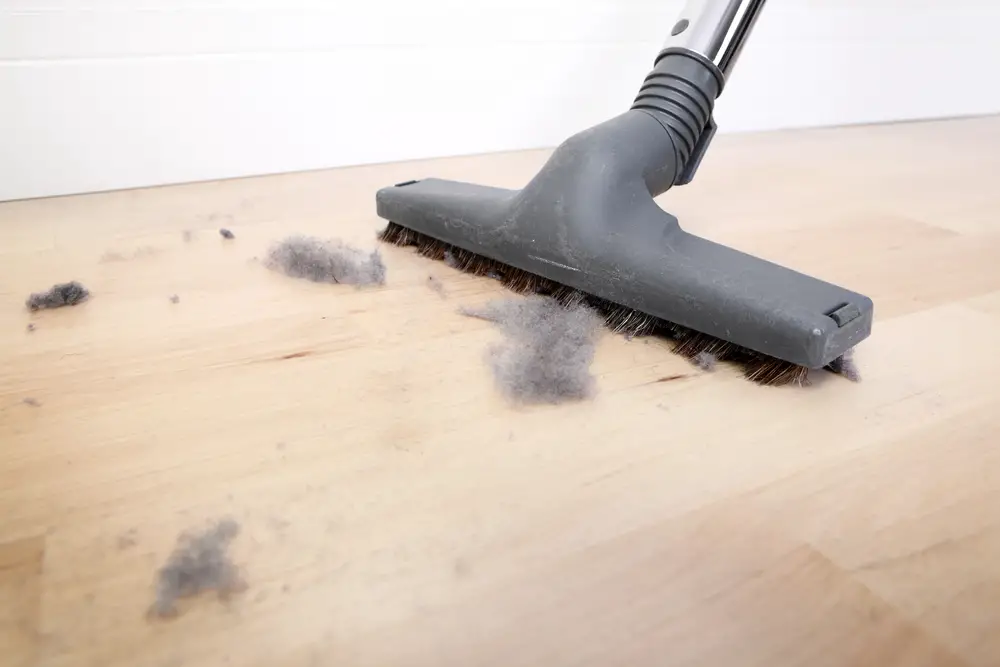
In general, fine particles like those found in dust are measured as having a diameter of fewer than 2.5 micrometers (PM2.5). In addition to airborne particles such as these, dust may also contain heavier items such as soil and sand-sized particles.
This type of larger particle can become suspended in the air when disturbed by activities like sweeping or vacuuming. Dust can be made up of a variety of materials, including:
Particulate matter (PM) – Fine particles of dust which are small enough to remain airborne and become lodged in the lungs. Examples include pollen, mold spores, fibers from clothing or furniture, and combustion products like smoke or soot.
Sand or soil – Larger particles that may be present as part of outdoor dust due to wind erosion or human activities such as construction.
Metals – Metallic particles found in industrial settings, usually composed of lead, zinc, aluminum, chromium, nickel, and other metals. These are hazardous when inhaled over long periods.
Bacteria and viruses – Microorganisms that can cause illness when inhaled.
Pollutants – Gases such as ozone, sulfur dioxide, nitrogen dioxide, and carbon monoxide which are released into the atmosphere from burning fuels.
In addition to these components, dust may also contain other substances like plant pollen and skin cells that can trigger allergies or cause irritation for some people. It is important to understand the exact composition of dust in your environment to take measures to reduce exposure to potentially harmful particles.
Through regular cleaning and air purification techniques, it is possible to control the amount of dust in your home or workplace [1].
Can Dust Make You Sick?
The short answer is yes, dust can make you sick. Dust particles contain allergens that can trigger asthma or allergies in some people. These particles include pet dander, mold spores, and tiny insects like dust mites. These allergens are small enough to enter the lungs and cause inflammation when inhaled. This inflammation makes it harder to breathe and can lead to coughing, wheezing, chest tightness, and other symptoms related to allergic reactions or asthma.
In addition to triggering allergies and asthma, prolonged exposure to dust can also lead to chronic health problems such as lung disease or respiratory infections.
In particular, people with existing heart or lung conditions are more at risk of developing serious health complications due to long-term exposure to dust. To reduce your exposure to dust and decrease your chances of becoming ill, it is important to take steps to reduce the amount of dust in your home or workspace. This may include regular vacuuming, using a wet cloth for dusting, using an air purifier, and keeping indoor plants that help reduce airborne allergens.
Additionally, if you suffer from allergies or asthma, you should ensure that you have access to appropriate medications in case of an attack. Taking these precautions can help keep you safe from the health risks associated with dust particles [2].
Reasons Your Bedroom Gets So Dusty, According to Cleaning Experts
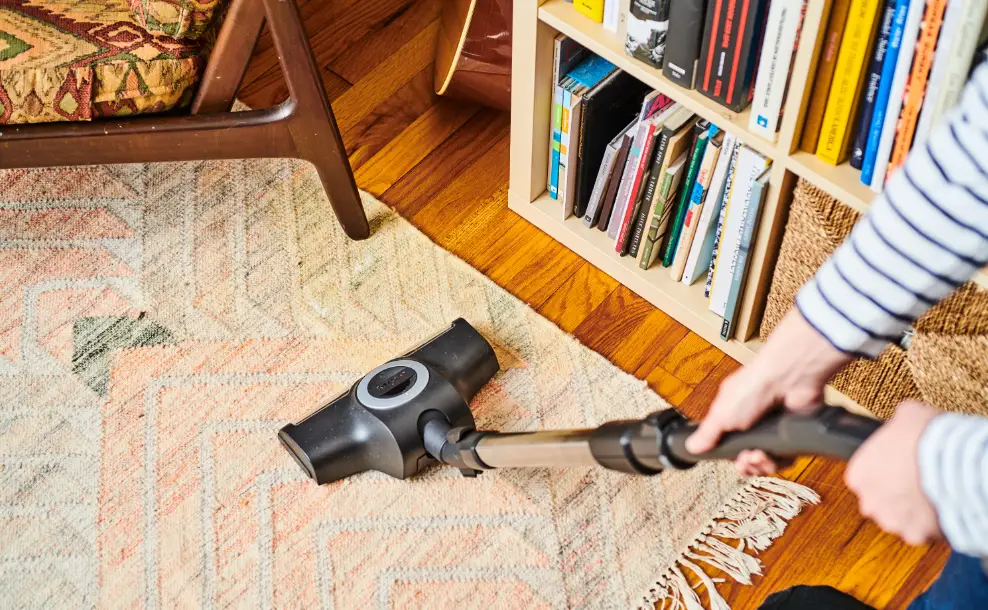
Textiles generate a lot of dust
Textiles and soft surfaces in your bedroom, like curtains, bedding, and carpets, are some of the biggest dust culprits. These materials contain tiny fibers that break off easily and float around in the air, filling your bedroom with dust.
Investing in allergen-proof covers for mattresses and pillows can help reduce dust buildup.
You’re not changing your air filters often enough
Air filters trap dirt and debris from the outside as well as particles that get stirred up inside. If you don’t change them often enough they become full of dirt, leading to increased dust levels in your room.
Cleaning experts recommend replacing HVAC filters every 90 days or so to avoid excessive dust accumulation.
You don’t have enough ventilation
Proper ventilation is essential for keeping dust levels down. If your bedroom doesn’t have enough ventilation, air won’t be able to circulate properly and dirt particles will linger in the air.
Make sure that you open a window or two during the day, especially when cleaning or cooking, to help keep the room fresh and clean.
You might be dusting inefficiently
Dusting is important for removing dust and dirt from surfaces, but if you’re not doing it properly it won’t be as effective. When dusting, start from the top of the furniture and work your way down so that any dust accumulates at the bottom. You should also use a damp cloth or microfiber towel to prevent particles from becoming airborne.
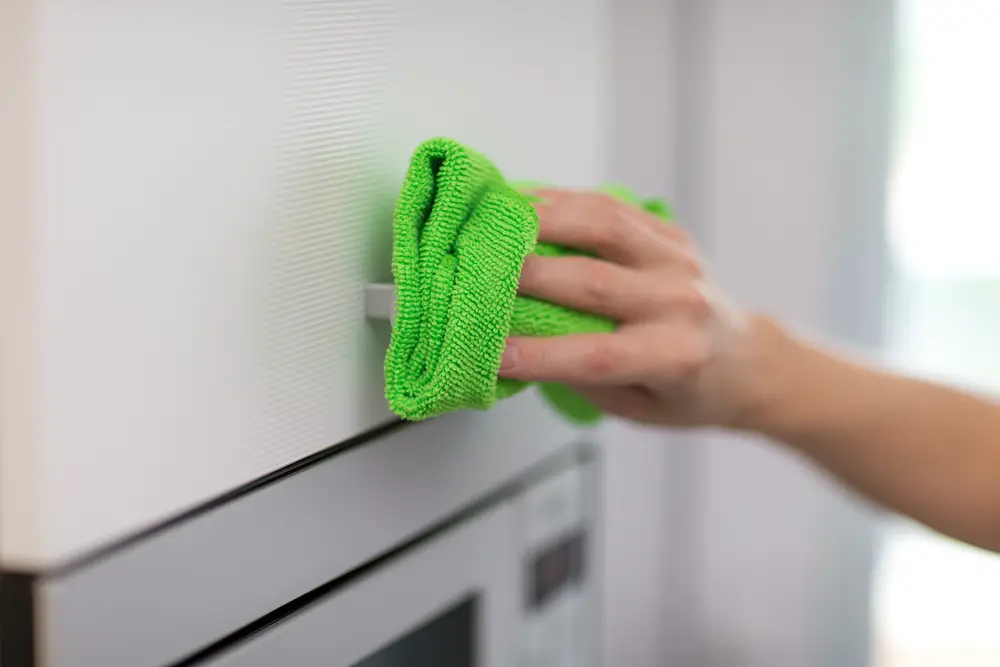
Your pets could be contributing
Pets can bring a lot of joy into our lives, but they can also increase levels of indoor dust. Not only do their fur and dander contribute to dust buildup, but they can track in dirt and other debris from outside as well. Regularly grooming your pets will help keep this problem under control.
You’re bringing in outside contaminants
The outside world can have a significant impact on the level of dust in your bedroom. Pollen, dirt, and other air pollutants can come in through open windows or be tracked in from outside.
To reduce outside contamination, make sure that you’re keeping windows closed when it’s windy or if there are high levels of pollen or pollution in the air.
Your room is too humid
Dry air is essential for keeping dust levels low. Too much humidity can cause dust mites and other particles to accumulate, making your bedroom feel stuffy and dusty. Invest in a dehumidifier or air conditioner to keep the room at an optimal humidity level of 30-50%. This will help make sure that your bedroom stays fresh and clean.
You’re not vacuuming often enough
Carpets and rugs are prone to collecting dirt and grime from day-to-day activities, which can lead to increased levels of dust in your bedroom. Vacuuming regularly will help remove dirt particles before they become airborne, giving you a cleaner space overall.
Vacuum at least once a week, and use a HEPA filter if you’re dealing with allergies or asthma [3].
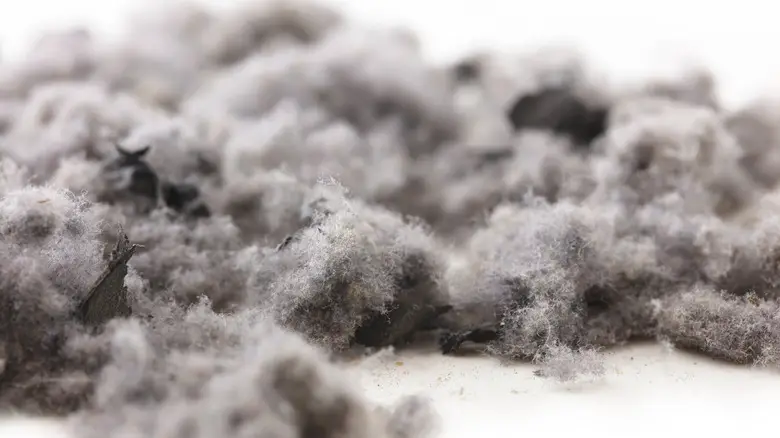
How to Reduce Dust in Your Room?
Use a Dust Screen
One of the most effective ways to reduce dust in your room is by using a dust screen. Dust screens are designed to keep dirt and dust from entering your room, while also providing you with a way to manage it once it does enter. These are available in different sizes and materials, so make sure you get one that fits your needs.
For added protection, opt for one with a heavy-duty filter or HEPA filter, which can efficiently trap up to 99% of airborne particles like pollen and dust mites.
Vacuum Properly
Regular vacuuming can help remove built-up dirt and debris from carpets and rugs that accumulate over time. However, if done incorrectly or too often, you could be stirring up more dust and allergens.
When it’s time to vacuum, make sure you have a high-efficiency filter vacuum cleaner that is specifically designed for picking up small particles. Also, go over your carpets and rugs at least twice to ensure all the dust and dirt is removed.
Clean Windows and Doors
Your windows and doors are prime spots for dust accumulation due to their porous surface areas. To reduce this problem, take some time every week to wipe down these surfaces with a damp cloth or microfiber cloth. This will help remove any trapped dirt or debris, as well as prevent new particles from entering your room through the cracks.
Place Rugs in High Traffic Areas
Using area rugs in high-traffic areas can help reduce the amount of dirt and dust entering your room. Since they act as a barrier between you and the floor, they’ll trap any dirt and debris so it isn’t kicked up into the air or onto furniture.
Make sure to regularly vacuum your rugs to remove any built-up dust or particles.
Use an Air Purifier
Air purifiers are great for reducing dust levels by trapping airborne particles before they can settle on surfaces in your room. Look for one with a HEPA filter, which is proven to be effective at removing allergens like pollen, pet dander, and dust mites from the air.
Regularly Change Your Bedding and Curtains
Your bedding and curtains are two of the most common sources of dust in a bedroom. To reduce this problem, it’s important to wash them regularly – at least once every two weeks. This will help remove any built-up dirt or debris, as well as prevent new particles from entering your room through the fabrics[4].
How Often Should You Clean and Dust Your Room?
To keep your room looking its best and to maintain a healthy living environment, it’s important to clean and dust regularly. Depending on how often you use the space, cleaning can be done anywhere from once a week to once every two weeks. If you have pets or if anyone in your household has allergies, it is recommended to clean more often as pet hair and dander can accumulate quickly.
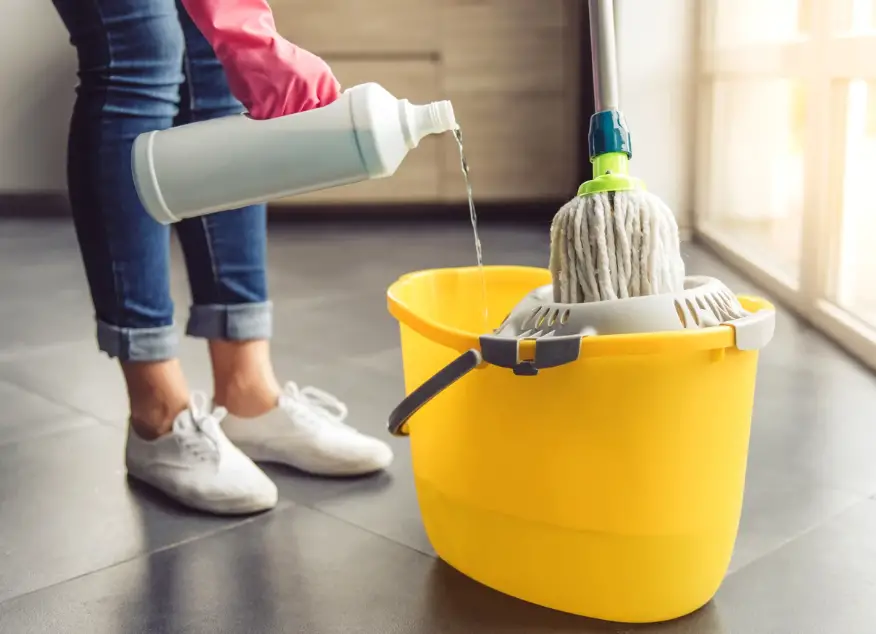
Dusting should also be done at least once a week, as dust can settle onto surfaces within days of cleaning. Additionally, if you live in an area with high levels of pollution, this may mean that additional dusting is necessary. Vacuuming carpets and rugs are also beneficial for removing dirt and debris from the floor.
When it comes to deep cleaning, this should be done at least once a month. Deep cleaning involves moving furniture and vacuuming underneath it, as well as wiping down hard surfaces like shelves and counters. It’s also important to clean windows and dust blinds to keep the room looking fresh.
No matter how often you are completing regular cleaning and dusting tasks, always remember to do them thoroughly to ensure that your room is kept in good condition.
Additionally, if you can’t find the time to complete these tasks regularly, consider hiring a professional cleaner who can come in and help with the work. This will give you peace of mind knowing that your space is being taken care of properly.
Which Rooms Have The Worst Indoor Air Quality In Your Home?
The rooms with the worst indoor air quality can vary based on several factors, such as how well-ventilated they are, what types of materials are used in their construction, and even how often you use them.
Generally speaking, however, the three most common rooms that have poor air quality levels are:
- The Kitchen – This room often has higher levels of airborne grease and other contaminants from cooking food. It is also areas like these where mold and mildew can more easily accumulate due to constant moisture.
- The Basement – Dampness combined with a lack of ventilation makes this space particularly susceptible to mold growth and other allergens. In addition, the dust that accumulates in basements is often more stagnant and can lead to poor air quality.
- The Bathroom – Humidity from showers and baths, as well as mold and mildew caused by dampness, make this room one of the worst offenders when it comes to bad indoor air quality.
Fortunately, there are several steps you can take to improve the indoor air quality in these rooms.
Regularly cleaning surfaces, using exhaust fans during showering or cooking, and investing in an air purifier are all great ways to reduce airborne contaminants and keep your home’s air clean.
With just a few simple changes, you can help ensure that your family is breathing clean air no matter which room they find themselves in [5]!
FAQ
Does opening windows reduce dust?
Yes, opening windows will help reduce dust in your house or office. By bringing in fresh outside air and allowing stale indoor air to escape, the number of airborne particles such as dust is reduced. This helps clean the air and make it healthier for you to breathe.
Additionally, opening windows can help remove odors and reduce humidity levels inside the home or office. Opening a window for just 10 minutes each day can have a positive impact on indoor air quality.
Is the dust under your bed dead skin?
No, the dust under your bed is not usually dead skin. It is mostly made up of bits of lint, dirt, and other small particles that have accumulated over time. These particles could be anything from pet hair to microplastics. It’s important to vacuum your carpets and furniture regularly to remove these particles from your home and reduce the amount of dust that accumulates over time.
How can I reduce the dust in my home?
Regular cleaning and vacuuming are key when it comes to keeping a dust-free environment. In addition, you should invest in air filters or purifiers which can help capture airborne particles like dust before they settle in your living space. Regularly replacing air filters will also help keep dust particles from building up inside your home.
Additionally, using a damp cloth when cleaning surfaces will help reduce the amount of dust that is stirred up in the air. Lastly, keeping windows open can help increase ventilation and reduce the buildup of indoor air pollutants like dust.
Is it safe to use chemical cleaners to remove dust?
It’s not recommended to use chemical cleaners on surfaces such as furniture or carpets to remove dust as they can be harmful if inhaled or ingested. Instead, opt for natural alternatives such as vinegar and baking soda which are safer and just as effective at removing dust. If you do need to use harsher chemicals, make sure you are following safety instructions correctly and wear protective gear when necessary.
Do curtains prevent dust?
Yes, curtains can help prevent dust from entering your home if the windows are opened. They act as a physical barrier to block out airborne particles such as dust from getting in. Curtains should be washed or vacuumed regularly to remove any dust or dirt that has accumulated over time.
Additionally, you may want to opt for washable curtains so that they can be put in the washing machine whenever needed.
How much dust is normal?
The amount of dust in a home can vary depending on its location and how often it is cleaned. Generally speaking, an average house can accumulate up to 40 pounds of dust per year. This means that you should be cleaning regularly and investing in air purifiers or filters if needed.
Additionally, having plants around your living space can help reduce the number of airborne particles like dust as they naturally filter the air.
Can you get sick from dusty air?
Yes, dusty air can lead to various health issues such as respiratory problems, eye irritation, and asthma. It’s important to ensure that you are regularly cleaning your living space and keeping windows open when possible to reduce the amount of dust buildup in the air.
Additionally, investing in an air purifier or filter can help capture airborne particles like dust before they settle in your home or office.
Useful Video: “Why Is My Room So Dusty?” – A Revealing Look How Dust Forms And Tips To Get Rid Of It
Conclusion
Dust in the room is an issue that can have a significant impact on our health and well-being, as well as the atmosphere of our home. It is important to take steps to reduce dust levels in your room and make sure it remains clean and free from allergens. This can be done through regular vacuuming, dusting, using a high-efficiency particulate air filter system, investing in hypoallergenic bedding, and checking for mold or mildew buildup.
Taking these precautions will help ensure you live in an environment with healthy air quality that does not cause allergies or other respiratory issues. With the right care, you can enjoy a comfortable space without worrying about the effects of dust particles.
References
- https://moderncastle.com/blog/what-is-dust-made-of/
- https://www.airoasis.com/blogs/articles/how-dust-can-affect-health
- https://www.apartmenttherapy.com/dusty-bedroom-reasons-prevention-36811250
- https://www.apartmenttherapy.com/easy-ways-to-prevent-dust-and-avoid-dusting-260706
- https://www.professionalservicestoday.com/poor-air-quality-in-home










Leave a Reply